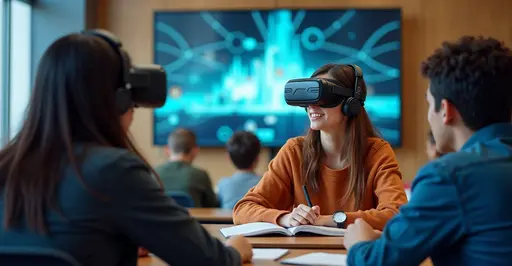
Gamification Revolutionizes Education Technology
Educational technology companies are increasingly turning to gamification strategies to combat student disengagement and improve retention rates. By integrating game-like elements such as points, badges, leaderboards, and achievement systems into learning platforms, EdTech firms are creating more compelling educational experiences that keep students motivated and engaged.
The Science Behind Gamified Learning
Gamification leverages fundamental human psychology - our natural desire for achievement, competition, and recognition. When applied to education, these game mechanics trigger dopamine releases in the brain, making learning feel more rewarding and enjoyable. Research shows that properly implemented gamification can increase student engagement by up to 60% and improve knowledge retention by 40% compared to traditional learning methods.
Key Gamification Elements in Modern EdTech
Leading educational platforms are incorporating several core gamification components:
- Experience Points (XP): Students earn points for completing lessons, quizzes, and assignments
- Achievement Badges: Visual rewards that recognize mastery of specific skills or completion of challenges
- Progress Bars: Visual indicators showing advancement through courses and skill development
- Leaderboards: Friendly competition that motivates students to improve their rankings
- Virtual Currency: Rewards that can be redeemed for customization options or additional content
Real-World Applications and Success Stories
Major educational platforms like Duolingo, Khan Academy, and Quizlet have successfully implemented gamification. Duolingo's streak system encourages daily practice, while Khan Academy's energy points and badges make learning math and science feel like an adventure. These platforms report significantly higher completion rates and user satisfaction compared to non-gamified alternatives.
Challenges and Considerations
While gamification offers numerous benefits, educators must be cautious about over-emphasizing extrinsic rewards. The goal should be to foster intrinsic motivation for learning rather than creating dependency on point systems. Additionally, gamification must be carefully designed to ensure it supports learning objectives rather than distracting from them.
The Future of Gamified Education
As artificial intelligence and machine learning continue to advance, we can expect even more sophisticated gamification systems. Adaptive learning algorithms will personalize game elements based on individual student preferences and learning styles. Virtual and augmented reality technologies will likely create immersive educational gaming experiences that make learning feel like playing.
The integration of gamification in education represents a significant shift from traditional teaching methods toward more engaging, student-centered approaches. As technology continues to evolve, the line between education and entertainment will likely blur further, creating learning experiences that are both effective and enjoyable.

 Nederlands
Nederlands
 English
English
 Français
Français
 Deutsch
Deutsch
 Español
Español
 Português
Português








